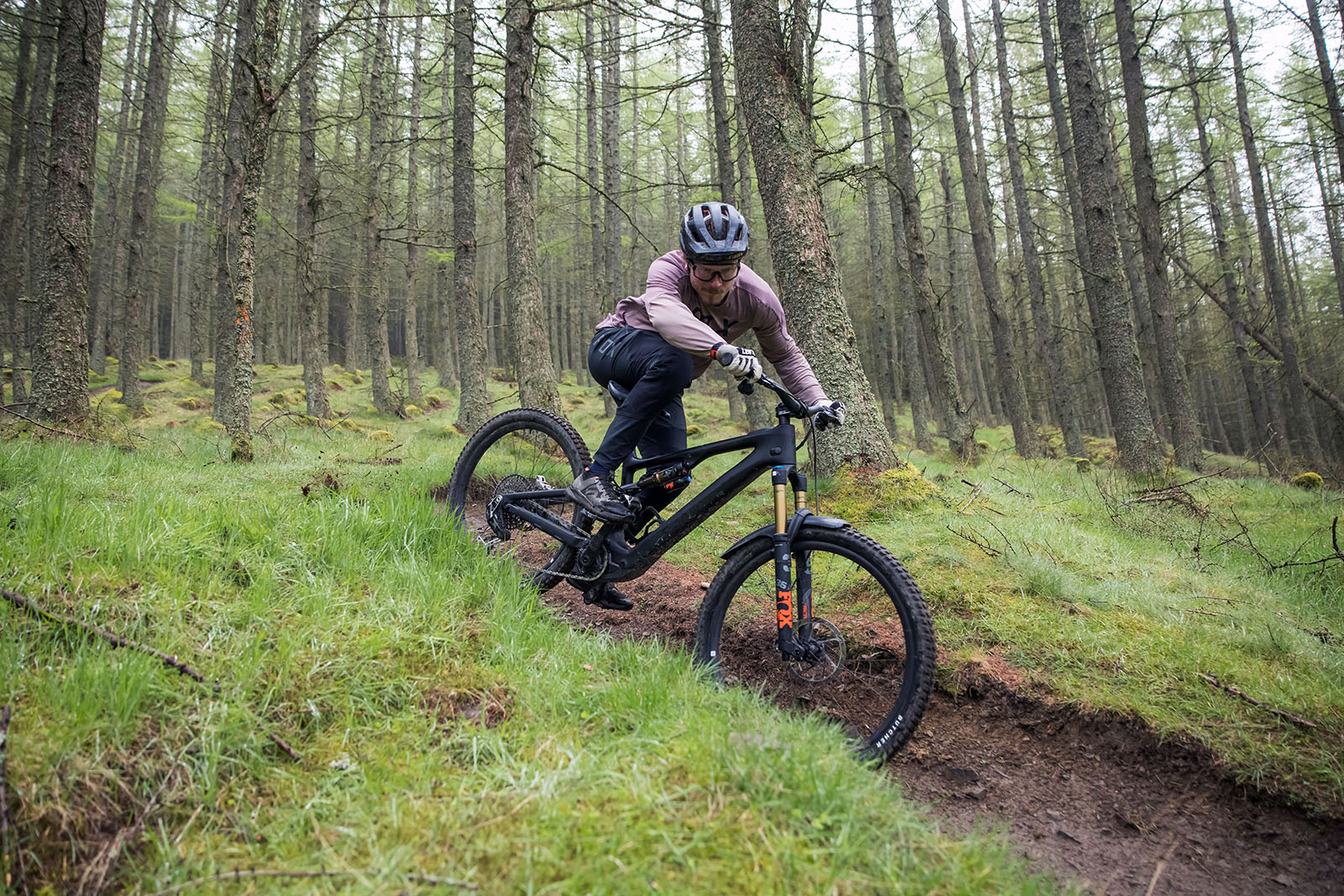We explain why eMTBs are more popular than ever
If you’ve visited a trail centre recently, you’ll have noticed there are more eMTBs than ever before.
We’re big advocates for electric mountain bikes and it’s difficult to ignore the level of fun they provide.
But why are these once-ridiculed rides growing in popularity? And what has shifted in the psyche of mountain bikers to make that growth possible?
Watch the video below or keep reading to find out why eMTBs are now so common and how we got here.
They’re so much fun
If you’ve had the chance to swing your leg over an electric mountain bike, you’ll know how much fun they are to ride.
With what feels like a second set of legs, you can take in more hills and shred more descents than on a non-assisted mountain bike.
Modern electric mountain bikes are good all-rounders, with long-travel eMTBs easily keeping up with regular enduro bikes on the descent.
Electric mountain bikes can also open up the trails to those who may have been restricted due to health conditions or older age.
They’re getting cheaper

In the world of ever-inflating bike prices, the gap that once separated eMTBs from non-assisted mountain bikes has shrunk, bringing down the barrier to entry for those once priced out of eMTB ownership.
For instance, a top-of-the-range Orbea Rallon M-LTD enduro bike is priced at £11,399. This is only £600 cheaper than the brand’s similarly specced Wild M-LTD, with both bikes having similar downhill credentials.
This price difference can be seen throughout the market.
Almost a decade ago, a full-suspension 2014 Haibike Xduro FS SL with 120mm of travel, a 250W motor and a 300Wh battery would set you back £2,850.
These days, entry-level electric mountain bikes such as the Vitus E-Mythique cost £3,299.
Taking into account inflation, this is an overall reduction in price, with the newer bikes also benefiting from 10 years of research and development.
The best bikes are better than ever

High-end eMTBs are better than ever, with the ranges brands offer expanding as demand increases.
The top-of-the-range Specialized S-Works Turbo Levo SL Limited is £13,500 and classed as a lightweight eMTB – bikes that have a smaller battery and motor than a full-powered eMTB.
Despite the compact motor, the Levo SL still has a peak power of 320 watts and 50 Nm of torque. Thanks also to a smaller 320Wh battery and some seriously bling components, it only weighs a claimed 17.35kg (38.25lb).
This isn’t too far off the weights of heavier enduro bikes.
Along with a drool-worthy spec, the bike features RockShox’s Flight Attendant electronic suspension, which automatically adjusts your damping for you as you ride.
While these bikes are outside the price range of most people, we’re hopeful the tech will trickle down to more affordable models soon.
They don’t look like eMTBs anymore

It’s getting harder and harder to distinguish between electric and non-assisted mountain bikes.
The majority of eMTBs integrate their batteries into the down tube, with motors sitting neatly in the bottom bracket area.
While this has happened, there appears to have been a shift in non-assisted mountain bike design, with the down tube widening for a perceived increase in stiffness.
Looking at Scott’s electric Lumen, with its integrated rear shock technology, it would be hard to separate it from the brand’s Spark trail bike unless you were told beforehand.
This makes it less obvious that you’re riding an electric bike and avoids any stigma attached to eMTBs that may still exist in the mountain bike community.
Modern motors

Early electric bike motors could deliver wayward boosts of energy, but modern motors no longer give you this out-of-control feeling.
The way the electronic drive is transmitted to the chainring now augments the rider’s own input synergistically and cuts in and out smoothly, giving a more natural feel.
Motor refinement has reached a new level, and modern examples are smooth and quiet – as well as incredibly powerful.
Larger-capacity, smaller batteries

Enhanced battery tech is one of the main ways eMTBs have developed.
The latest generation of batteries offers larger capacity, shorter charge times, and smaller, lighter packaging than ever before.
This reduces range anxiety and increases the bike’s playfulness, with some lightweight electric mountain bikes not feeling too different from the latest enduro bikes.
Range extenders are also available for various bikes, especially lightweight eMTBs. These external batteries mean riders can increase their bike’s battery capacity to match their riding and range.
Because your friend bought one

If you don’t have an eMTB, they can prove frustrating. While heading up long fire-road climbs, your electrically assisted friend can leave you breathless, by either setting a pace your legs can’t match, trying to engage you in conversation, or both.
Riding any form of mountain bike is better with friends, so while the first person in your group to pull the trigger on an eMTB may be considered a traitor, it might not be long before your peers also make the jump to an electric bike.